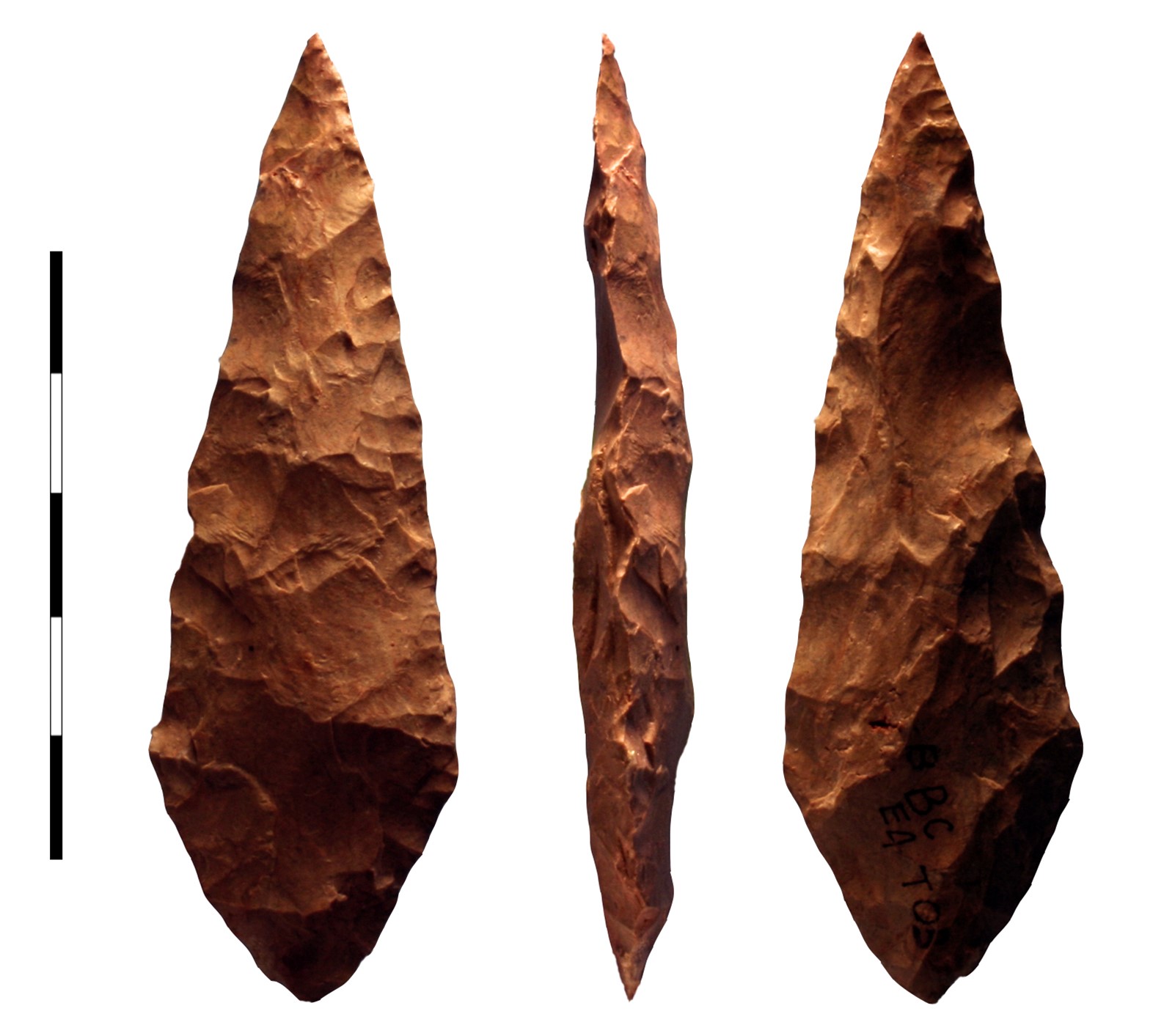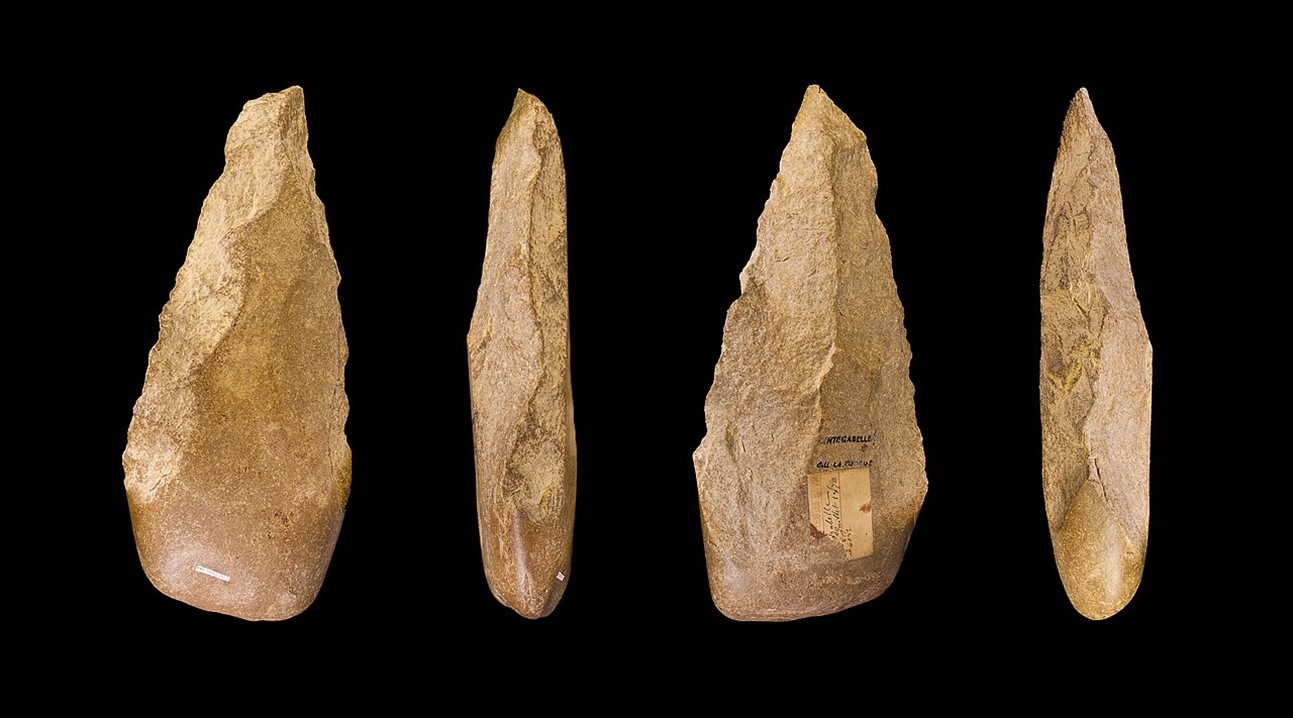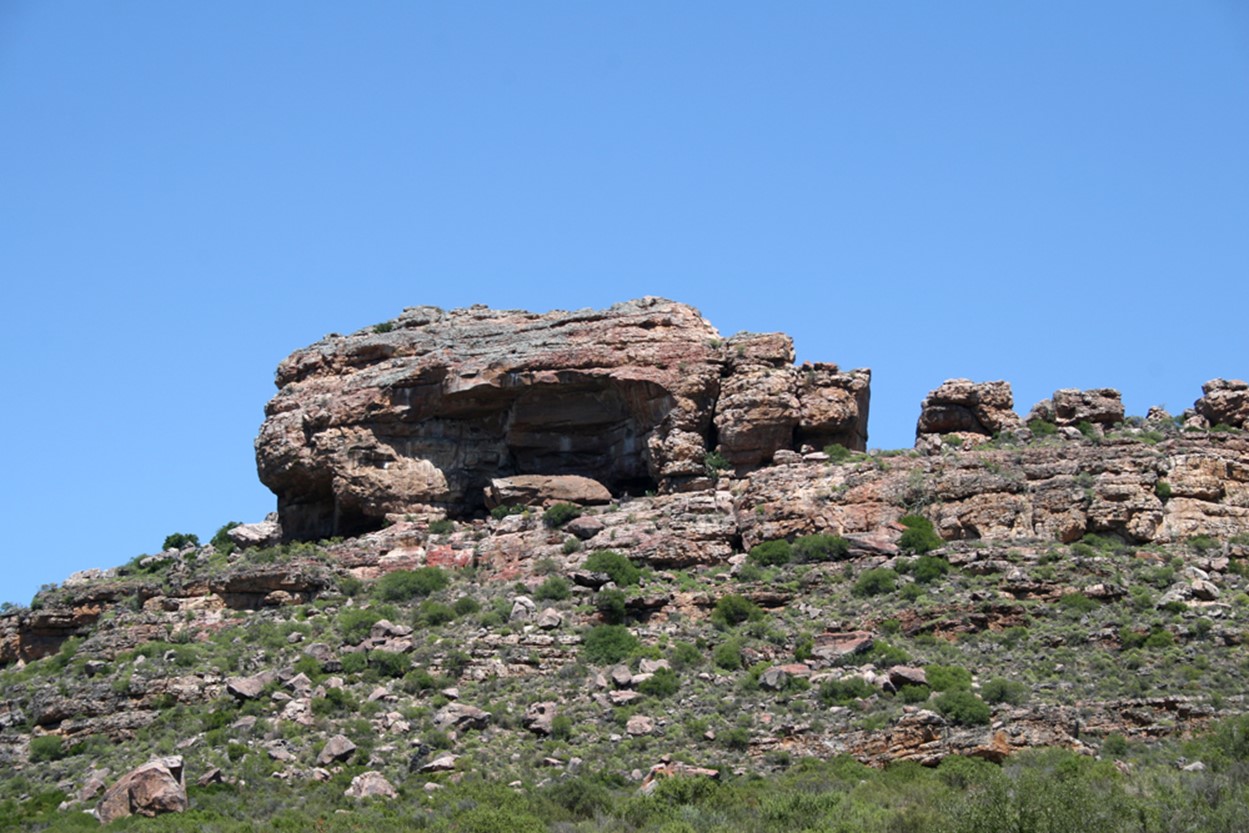
Credit: Vincent Mourre / Inrap, CC BY-SA 3.0, via Wikimedia Commons
Four to six thousand years ago, humans invented metallurgy. Until that time—for 99 percent of hominid history—we were living in the Stone Age.
The earliest evidence of prehumans using stone tools comes from 3.4 million years ago, with tool marks found on fossil animal bones in East Africa.
The earliest, very primitive stone tools come from 3.3 million years ago, probably used by Australopithecus or Homo habilis.
Around 1.7 million years ago, our ancestors developed more-advanced tools, chipping flakes off the sides of stones to make a sharp cutting edge.
Around 70,000 years ago, and possibly much earlier, toolmakers began to research the properties of rock.
In a cave shelter in South Africa, scientists found evidence that early Homo sapiens were testing some types of rock for ease of working and others for durability—could the edge stand up to repeated use.
These toolmakers initially preferred quartzite, a hard metamorphic rock that fractures predictably, to make sharp, finely crafted spearpoints.
Five thousand years later, they had shifted to making small arrowheads from more fragile silcrete, which shaped easily and may have been designed to break apart in prey, disabling them.
These early humans carefully selected their raw stones with an understanding of what tools they could become. You could call them our first geologists!
Background
Synopsis: The Stone Age lasted for more than 3.4 million years. For practical purposes, prehistoric tool knappers became Earth’s first geologists, searching for just the right raw materials. Recent studies show that more than 70,000 years ago they deliberately and efficiently balanced local availability and material strength with how easy it was to flake rocks into fit-for-purpose implements.
- The Stone Age is defined as a period during which stone was shaped to have sharp points, edges or surfaces created by percussion, striking of one stone against another.
- It encompasses around 99% of human history, starting at least 3.4 million years ago and continuing until the advent of metalworking between 4000 and 2000 BC.
- Stone tool marks on 3.4 million-year-old fossilized animal bones from Ethiopia’s Lower Awash Valley provide the oldest evidence of tool use.
- The oldest stone tools ever excavated, at 3.3 million years old, were found at the Lomekwi site along the western bank of Lake Turkana in northwestern Kenya. These Pliocene tools must have been used by hominins like Australopithecus or Homo habilis.

This Oldowan knapped stone from the Guelmim-Es Semara region of Morocco is typical of a widespread style of simple stone tools made with just a few flakes chipped off and was used by hominins from 2.9 to 1.7 million years ago in Africa.
Credit: Locutus Borg, public domain, via Wikimedia Commons - The oldest known tools outside of Africa are 2.12 million-year-old tools found in China in 2018.
- By about 1.7 million years ago, stone tools became more advanced, with two concave surfaces intersecting all the way around to form a cutting edge, some with points. Acheulean tools are often associated with Homo erectus and are found in a much wider geographical range.

Four different views of the same Acheulean hand ax from Haute-Garonne, France.
Credit: Muséum de Toulouse, CC BY-SA 4.0, via Wikimedia Commons
- Stone tools continued to improve and evolve as their makers became more proficient in their knapping skills, but picking the best material for the tool was the first step.
- Did toolmakers just pick up any rock?
- Did different groups of hunter-gatherers have favorite rocks for tools?
- Did they look for specific types of rock for specific tools?
- Recent investigations of tool specimens from the Diepkloof Rock Shelter in the Western Cape region of South Africa suggest that intentional decisions about raw materials were being made by tool workers as much as 70,000 years ago.
- Diepkloof Rock Shelter is a butte of quartzitic sandstone facing east about 11 mi (17 km) from the Atlantic coast north of Cape Town.

The Diepkloof Rock Shelter sits 330 ft (100 m) above the Verlorenvlei River about 93 miles north of Cape Town, South Africa.
Credit: Vincent Mourre / Inrap, CC BY-SA 3.0, via Wikimedia Commons - It is about 82 ft (25 m) wide and 50 (15 m) ft deep and contains one of the most complete Middle Stone Age sequences in southern Africa, ranging from 130,000 to 45,000 years before present.
- Diepkloof Rock Shelter is a butte of quartzitic sandstone facing east about 11 mi (17 km) from the Atlantic coast north of Cape Town.
- Researchers analyzed the mechanical properties of tool stones found at the site.
- To describe knapping quality, they measured the predictability of flaking and determined how to calculate the force required to produce flakes from different types of rocks.
- To understand the quality of the finished tools, they evaluated tool resistance during repeated scraping or cutting and their strength during projectile impacts.
- Shelter tool makers used a variety of rock types, such as quartz, quartzite, hornfels and silcrete.
- Some of the rock types just needed to be tapped lightly, while others needed three times as much force to fracture.
- Ancient humans appear to have been testing materials and making decisions about which stones had the right rock properties for specific uses as long as 70,000 years ago, maybe longer.
- Toolmakers from about 71,000 years ago appeared to prefer using quartzite, probably because it is a hard metamorphic rock that fractures predictably, for making durable, finely crafted spearpoints that can stand up to longitudinal force.
- At around 65,000 years ago, the artisans liked silcrete better. It is a rock formed from dissolved silica in soils and fractures more easily than quartzite. These people made many small arrowheads and spearpoints that may have been designed to break off to disable prey.
- It is a good bet that these ancient geologists made mental maps of where they found the best type of rocks along their journeys for future reference.

